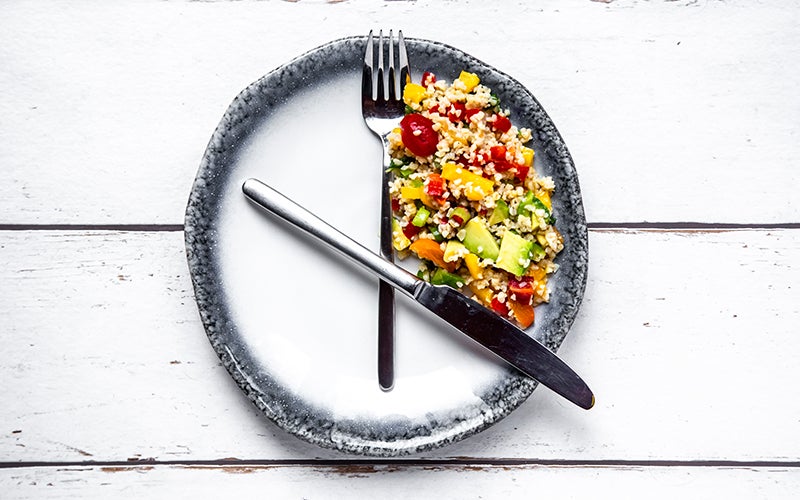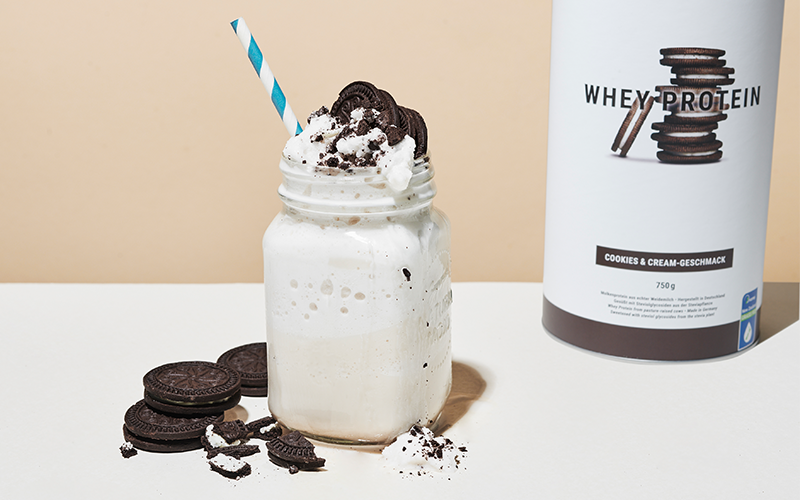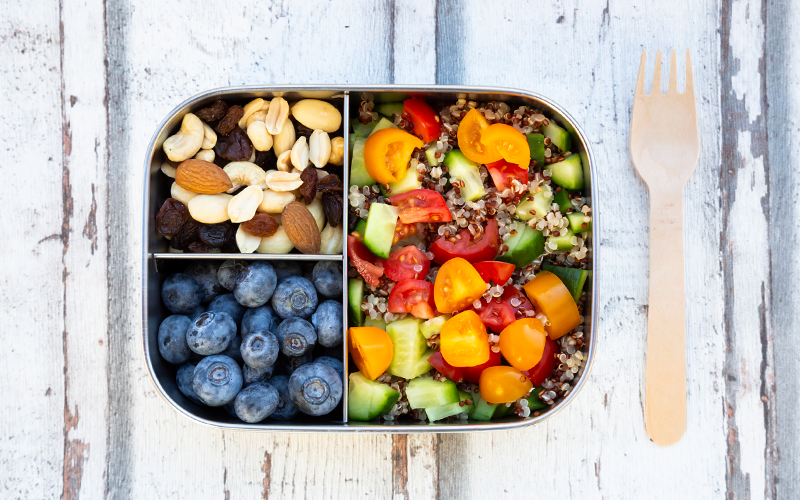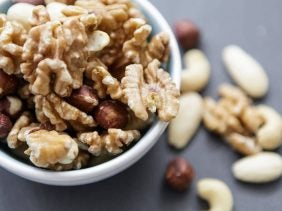Intermittent fasting: Investigating the dieting trend
 ©Westend61
©Westend61
Is intermittent fasting as simple as skipping the occasional meal? Here, we investigate what this diet trend is all about, as well as the benefits of intermittent fasting.
What is intermittent fasting?
Intermittent fasting has become extremely popular lately, but you might not be entirely sure what exactly it entails. Basically, it’s when you eat at fixed intervals throughout the day and fast for the remainder of the time. Thankfully, you get to choose when you’ll be eating and when it’s time to fast. Here are some of the most common intermittent fasting methods.
The 16/8 Method
This method requires you to fast for 16 hours, and then resume your normal eating habits for the remaining 8 hours of the day. We recommend scheduling your intervals so that you’re fasting when you’re asleep. If you do choose to fast while you’re awake, be sure to drink lots of water and keep yourself sufficiently hydrated.
Alternative-Day Fasting
With this method — also known as alternating fasting — you eat normally one day, and only 25% of what you’d normally eat the next day, going for a maximum of just two days per week. If you typically eat three meals a day and a couple snacks, you should eat just one meal on the day you’re fasting. And it’s important to make sure that the meals you eat on the day before your fast are hearty enough to keep you nourished when you are fasting. As with all fasting methods, be sure to stay well hydrated the whole time.
The 2-Day Diet Method
This method is exactly what it sounds like: a 2-day-long diet in which you eat just 650 calories per day, and then resume eating normally for the rest of the week. It’s strict, but short, and should include mostly whole grain foods, protein, and vegetables.
Tip: Our Whey Protein is the perfect product for this method because it has all the nutrients you need, is easy to incorporate into just about anything, and is available in flavors like caramel, coffee, and vanilla.

The No-Dinner Method
This one is all about skipping dinner, but just two or three times per week. It’s actually pretty similar to the 16/8 method, because you usually end up skipping dinner when you don’t eat for 16 hours. And if there’s no way for you to skip dinner, you can simply skip breakfast instead!
16/8 is the easiest option of intermittent fasting for weight loss
This is our favorite of all the intermittent fasting methods because it’s the simplest to follow and the easiest to integrate into your daily life. If you organize your day, 16 hours of fasting will pass in no time. All you have to do is skip your morning or evening meal and shift your eating window. Here’s an example of how to organize your day:
Intermittent fasting plans
| No breakfast | Last meal: 8pm
Next meal: 12-1pm | 16-17 hours fasting period |
| No lunch | Last meal: 7am
Next meal: 8-9pm | 13-14 hours fasting period |
| No dinner | Last meal: 2-3pm
Next meal: 7am | 16-17 hours fasting period |
The importance of eating well while fasting
Whichever method of fasting you choose, eating healthy when you do eat is of the utmost importance. All the methods we’ve mentioned require you to eat little to nothing during fasting periods, which means it’s extra important to stay hydrated during these times. Coffee, tea, and water are all fair game — just be sure to avoid drinks that contain a lot of sugar or calories. Staying hydrated while fasting will help you reap the health benefits in an optimal way.
The benefits of intermittent fasting
What does intermittent fasting do? Most people use it to lose weight, and several studies from the German Nutrition Society¹ show that fasting may help you with weight loss. In order to maintain your weight after fasting, it’s important to continue following a nutritious diet, starting with plenty of water and at least five fruits and veggies a day.

Fresh fruit and vegetables are easy to incorporate into your daily routine. And our Daily Vitamins will guarantee you get all of the essential vitamins you need to continue feeling energized during intermittent fasting.
3 Tips for Intermittent Fasting
If you’ve struggled to reach your weight loss goals with other diets, consider giving intermittent fasting a try. Keep these three important tips in mind before you get started.
1. Listen to your body.
To get the best results of fasting, you need to be organized, with a designated eating window throughout your days. Luckily, there are many different fasting methods, so it’s easy to find one that fits best with your schedule. Just be sure to listen to your body and adapt your needs as necessary.
2. Intermittent fasting doesn’t mean starvation.
While it’s true that you need to eat fewer calories to lose weight or body fat, your daily calorie deficit should never be more than 500 calories, otherwise you run the risk of being totally exhausted and suffering from massive cravings.
3. Don’t stress.
Being too stressed can actually inhibit your body from losing weight. The higher your stress levels are, the more your body produces cortisol, which is a hormone that can result in digestive problems and sleep disorders, among other things. If you’re too stressed when you’re skipping breakfast – or whichever calorie restriction method you choose – it may not produce the weight loss results you were hoping for.
Conclusion
- Intermittent fasting can be a good way to help you eat fewer calories.
- Whatever method you choose, be sure to stay well-hydrated.
- The 16/8 method is one of the simplest to incorporate into your daily routine, since you’re usually asleep for a large amount of that time.
- Maintain a healthy and balanced diet to ensure long-term results from intermediate fasting.
Sources for this article
We at foodspring use only high-quality sources, including peer-reviewed studies, to support the facts within our articles. Read our editorial policy to learn more about how we fact-check and keep our content accurate, reliable, and trustworthy.
- ¹Deutsche Gesellschaft für Ernährung: Heilfasten, Basenfasten, Intervallfasten – ein Überblick. DGEinfo (2/2018) 18-25, Zugriff: 07.12.2019






















